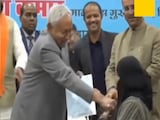Once the deboosting manoeuvre of Chandrayaan-3 spacecraft's lander Vikram begins, the lander will be in 'automatic mode' and will decide, based on data and with its own intelligence, how to go about its functions, Kailasavadivoo Sivan, former chairman of Indian Space Research Organisation, explained today.
"There is no interruption from the ground," he said.
Speaking to NDTV, Mr Sivan said there's always some redundancy in sensors and other systems, which will allow the lander to work according to the intelligence built into the system.
The lander, Vikram, successfully completed a deboosting manoeuvre today at 4 pm. It had separated from its propulsion module yesterday and continued its journey towards the Moon.
On what happens now before touchdown, Mr Sivan said when the lander is sorting its travel from the orbit, in 2 km per sec velocity, it needs to be reduced to zero exactly when it touches the surface of the moon. "It is a critical and crucial action," he said.
The 'Pragyaan' rover will come out of the lander after two hours after the moondust has settled, he added.
Corrections have been made after studying all the errors in the Chandrayaan-2 mission to make a robust system, Mr Sivan said, adding that it will ensure success no matter what the condition of the flight is. Propulsion, guidance, and control systems were upgraded and redundancy was added wherever it was missing, which will help salvage the sensors in case of any trouble, he said.
The South Pole region of the Moon, also called the shadow region, is unexplored, and new science is expected to be discovered by doing experiments there, the former ISRO chief said about the objective of the lander. The "new science" will not only be useful for India, but the entire world as other countries can use the data for their own experiments.
The Vikram lander is expected to touch down on the Moon's surface next Wednesday.
The first images of the moon's surface were taken by cameras onboard the Vikram Lander soon after its separation from the propulsion module on August 17. The pock-marked and cratered lunar surface can be seen clearly. It also suggests that all systems seem to be working nominally on the Vikram lander.
Following the moon landing, the rover will collect data on the composition and geology of the surface of the moon, paving the way for wide-ranging research.















